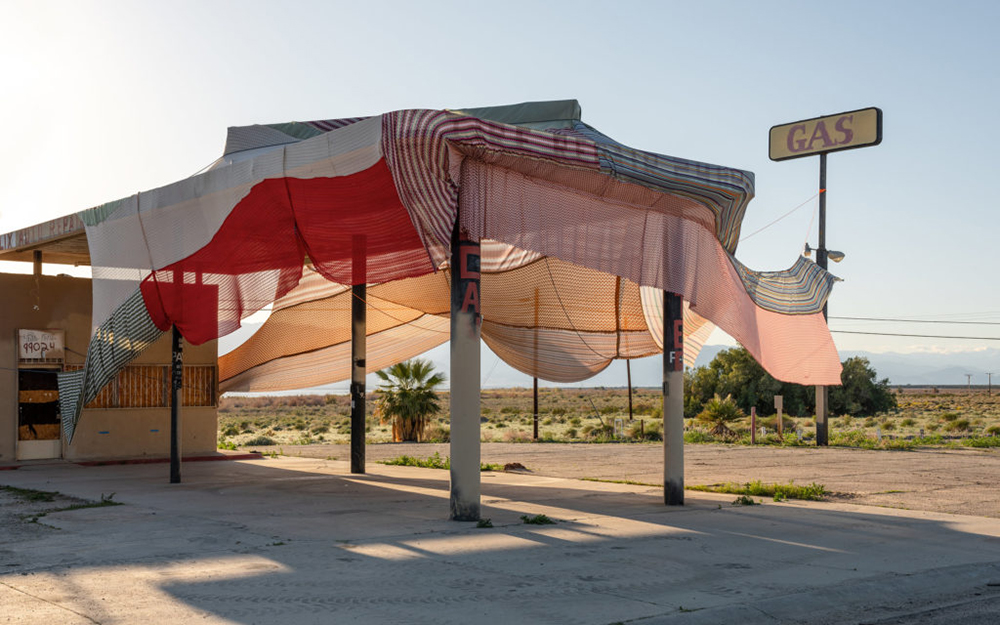
By Angela Romeo
Eric Mack was born in Columbia Maryland in 1987. During his career he has garnered several prestigious award and commissions. His work is architecture is motion and is a study of structures against surfaces and systems. He described his work as visual sheet music. Halter, with its billowing fabric stretched across the classic California gas station, did for a brief moment, reflect that sheet music. On March 12, 2019 Artist Eric N. Mack made this announcement on his Instagram feed:
“I am overwhelmed by the news that my work Halter was vandalized, burned, and stolen from its Desert X site yesterday. As I process the loss of this artwork that I and many others worked tirelessly to realize, I am only pacified by the knowing that many visitors experienced and appreciated it as it was. While the violence and hate enacted on this installation is astounding, I will not allow for this disregard to become a gesture that obstructs nor defines this work of art.”
The installation was located at 99021 Grapefruit Boulevard and Vander Veer Road in Mecca. It was, as the Artist noted, found “vandalized, burned, and stolen” from this site. No one has claimed responsibility and the “why” remains unanswered.
Halter was an ambitious installation of Desert X. This site-specific work took a quintessential California gas station and draped the abandoned building in colorful fabrics. The site is reminiscent of a time when a gas station was the last bastion of comfort between endless miles of road. It was that gas tanks were filled, legs stretched and a cold drink was found. Mack gave visitors that similar reconnection. At Halter, visitors were able to have the same respite experience – walking between the blowing fabrics that created a tent and an umbrella from the elements.
Mack further describes his work in these terms “Rhythm is the basis of our visual world, from the windows and tile arrangements found in our homes, to the composition of plant life and oceanic creatures. Most every form of matter that we acknowledge throughout our daily lives possess the evidence of rhythmic life. Rhythm structures tone and sound. It gives shape to speech, melody, dance, poetry, and the human body. Without rhythm light, sound, and other forms could not be differentiated from one another as it is their frequency or rhythmic waveforms that define them” Those fortunate to have seen halter did share that architectural rhythm. The installation made great use of the desert’s natural beauty and natural resources. The wind created a unique, non-repeating sound as it blew through the building and the fabrics. The building was, again for a brief time, reconnected to its base. Halter never took away from its desert environment. Rather, Halter gave the discarded man-made intrusion a new life.”
Why Halter was destroyed will likely remain a mystery. The destruction of art in any place for any reason is a cause for concern – most often our freest expression of freedom is the first to be suppressed.
Or, perhaps, Halter is the true essence of Desert X, a site-specific work that it fell captive to the harshness and often experienced desolation of the desert.
For more information on Desert X visit desertx.org










































